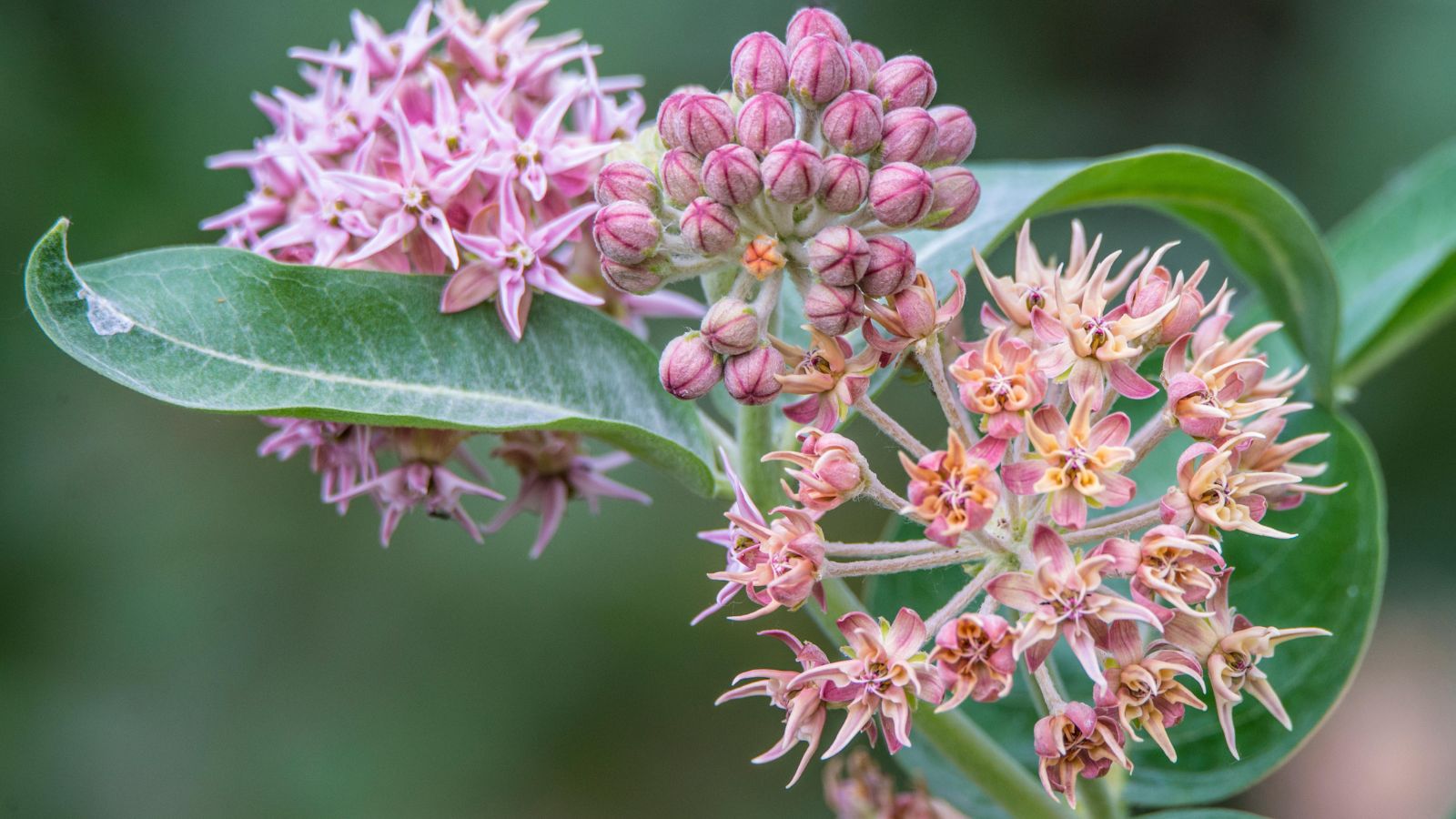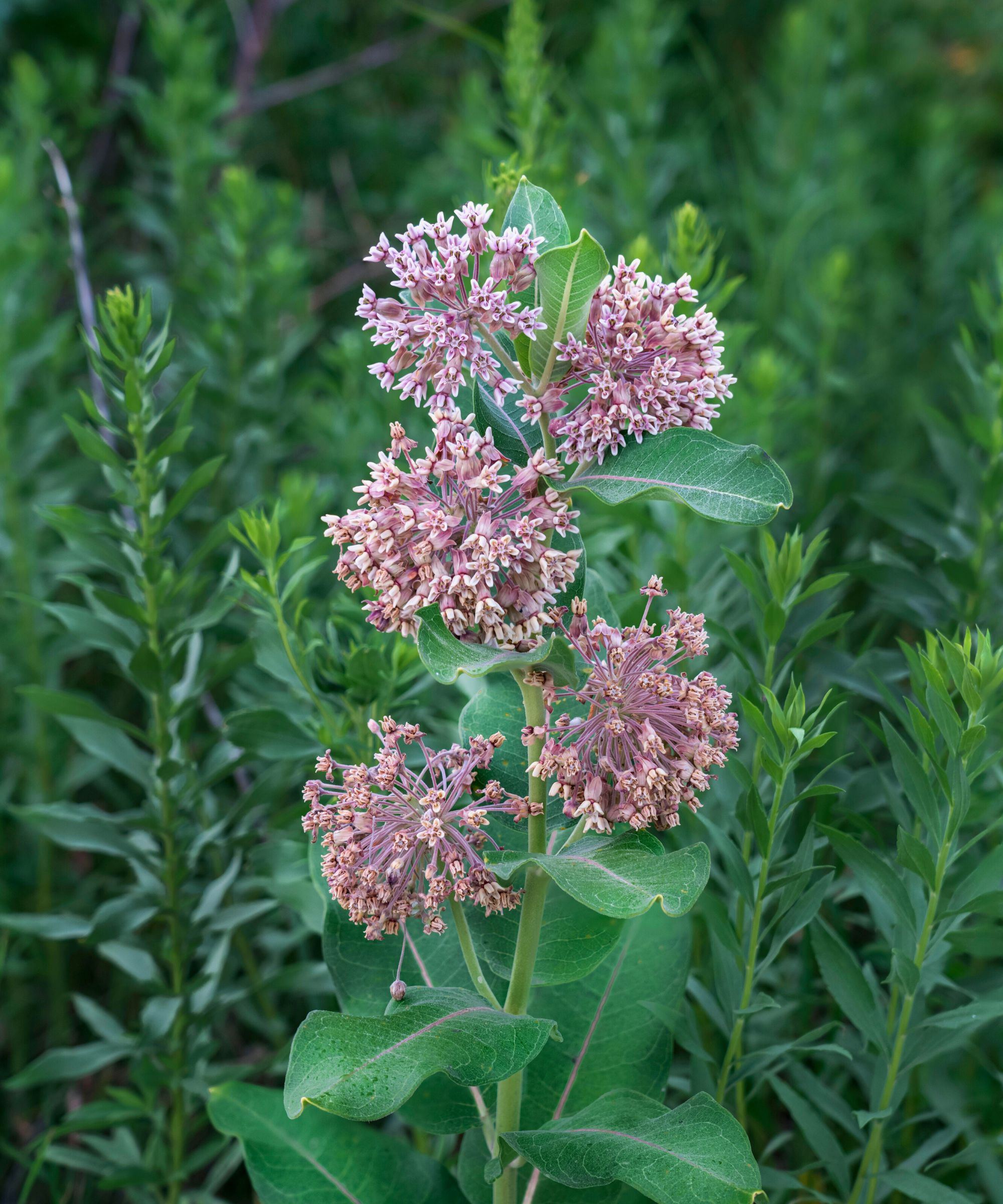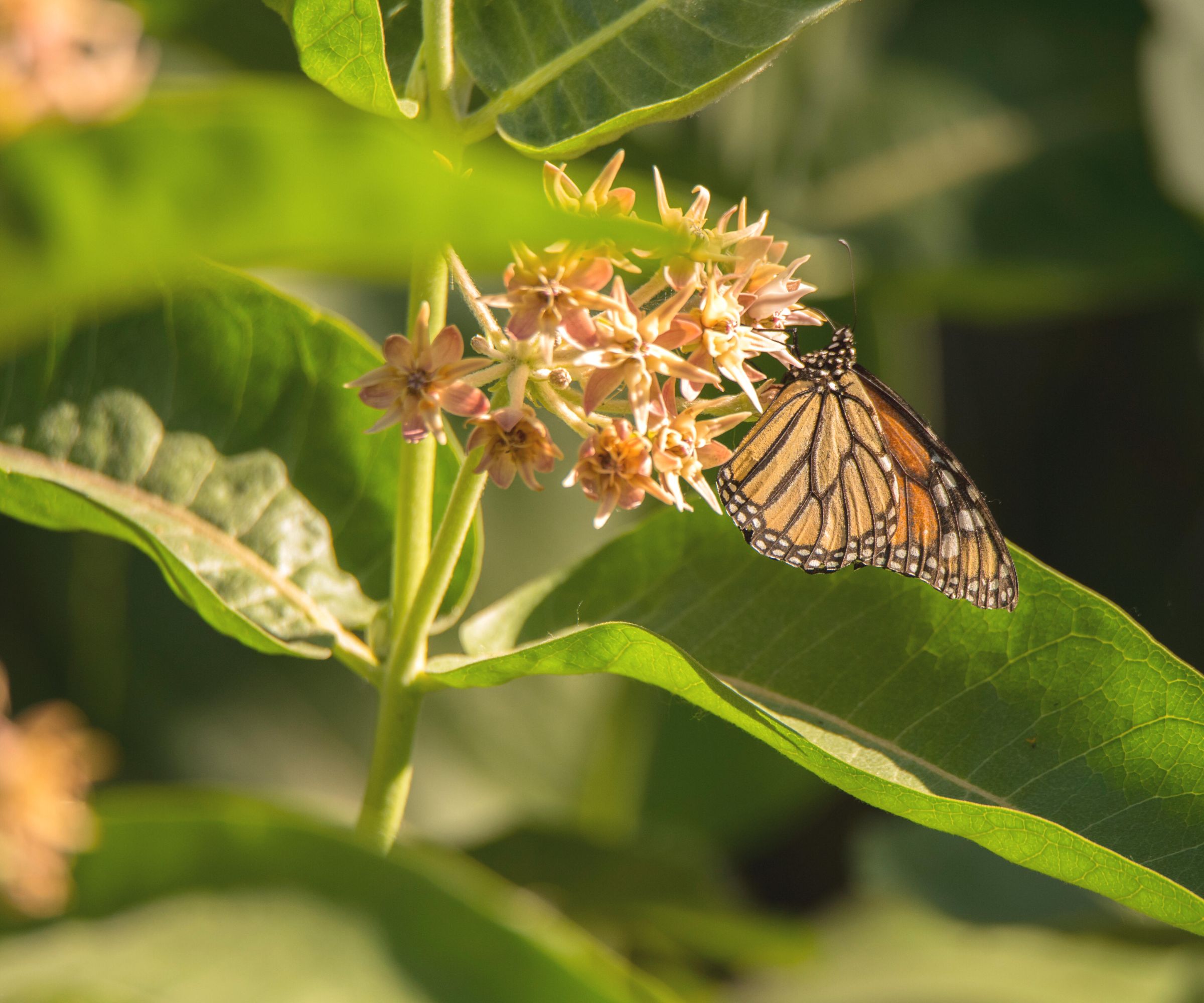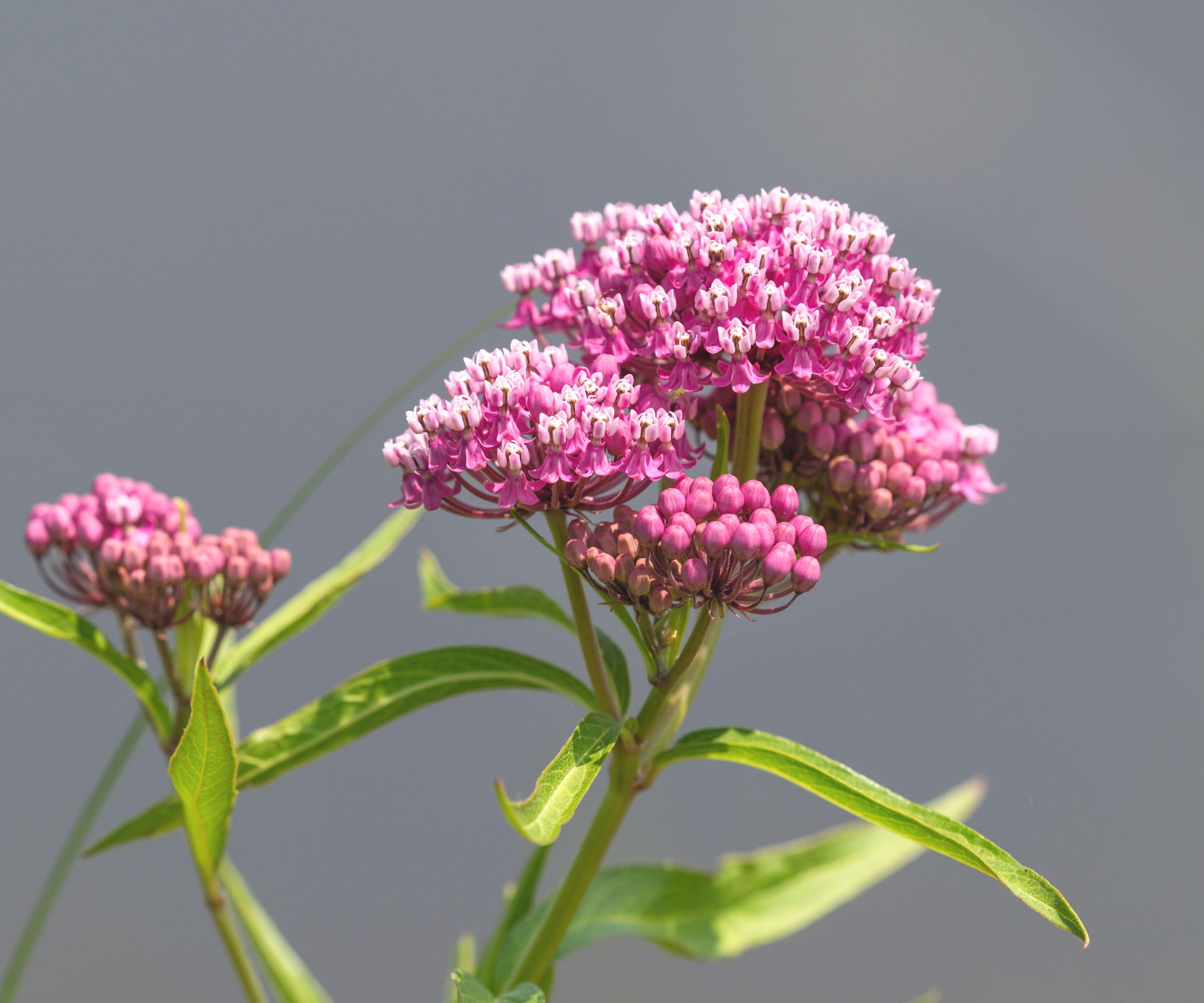How to grow milkweed – for bright blooms year after year
Learn how to grow milkweed for beautiful blooms to attract butterflies with this comprehensive guide


Knowing how to grow milkweed can introduce a variety of beautiful blossoms into your garden, all of which provide great food sources and breeding grounds for some of the prettiest butterflies.
Milkweed is a wildflower ideal for your flower bed ideas with the multitude of colors that are beloved by monarch butterflies in particular. In fact, the plant is the sole source of sustenance for these orange critters so it makes an ideal addition to a garden for pollinators.
Despite there being around 140 wild species of this perennial flowering plant, they are instantly recognizable by their bright colors, clusters of five united petals, and tufted seeds. 'There are three main types of milkweed plants that are great choices to plant in your garden. Common milkweed, Swamp milkweed, and Butterfly weed. ,' explains Anna Eklöv the director of LÖV Flowers. '
The commercially available varieties of these wildflowers make the ideal addition to any cottage garden ideas and, luckily, they are easy to grow from both seeds and starters. What’s more, you can grow these flowers from cuttings, so you can share and duplicate these plants easily. Be aware that milkweed is classed as a poisonous plant.
How to grow milkweed
There are a few ways you can begin growing milkweed to grow your garden ideas. From seeds to cuttings, we provide step-by-step instructions for the best milkweed blooms.
When to plant milkweed

As with planting wildflower seeds generally, milkweed is best planted as seeds in late fall as they need to be vernalized (cold treated) before growth. By planting your seeds in fall, winter frosts stimulates germination and prepares the seeds for growth in the spring and summer seasons.
Leaving seeds outside for this long, however, can leave them vulnerable to garden birds and pests, so you could either cover and protect your new seeds over winter or germinate your seeds indoors and simulate cole treatment in your home.
Design expertise in your inbox – from inspiring decorating ideas and beautiful celebrity homes to practical gardening advice and shopping round-ups.
How to grow milkweed from seeds

Milkweed seeds can be planted either directly in your outdoor soil or started indoors.
‘When planting directly outside, scatter the seeds on the soil's surface approximately ¼-½ an inch apart before covering with approximately ¼ inch of additional soil,’ explains Homes & Gardens’ garden expert, Rachel Crow. ‘It is good practice to water your seeds frequently if there is little rain until the plants are established.
‘When starting your seeds indoors, you will need to simulate the cold treatment process yourself. This method is good if you want to plant your seeds in the springtime rather than the previous fall.’
To cold treat your seeds indoors, sprinkle your milkweed seeds onto a damp paper towel and wrap. Place this towel into a sealed plastic bag and refrigerate for 30-60 days, depending on what your seed packet recommends. Most milkweed varieties need a minimum of 30 days in the cold to start the germination process. If you notice the seeds sprouting at any point before this, make sure to plant immediately.
Once the germination process has begun, plant the seeds in seed trays, plant pots, or other small containers that allow for drainage. Dampen the soil and place one to two seeds into each two-inch container, pressing them very gently into the soil. Place them in a sunny spot in your house and water regularly to keep the soil moist but not soaking. Once they have reached approximately one to five inches tall, they can be moved outdoors.
Milkweed plants produce seed pods each year, so it may be worth learning how to collect and store seeds from your garden plants to reap the rewards of your hard work every year.
How to grow milkweed from starter plants

Buying milkweed plants as starters instead of seeds can be more expensive however removes the need to cold treat seeds so may be more beginner friendly.
You want to plant starters in groups of six or more to attract butterflies approximately six to 24 inches apart depending on the species. The more you have, the better with these plants.
Transfer starter plants to your outdoor soil once the danger of frosts has passed by gently removing the starter plug from the original pot, moistening the bottom of the soil if dry, and planting it into your garden soil or compost.
How to grow milkweed from cuttings

Just as with other perennial plants, milkweed plants can be propagated from cuttings, and learning how to take plant cuttings is simple.
Collect your milkweed cuttings in mid-summer, when the plant stems are strongest by using sharp pruning shears to remove stems that have three to five leaf nodes. They should be about four inches long.
To start cuttings, coat the bottom of the cut stem with a strong rooting powder before placing it in high-quality potting soil which has been kept moist. Keep your cuttings in a shady area outdoors to avoid direct sunlight as roots form.
Cuttings can usually be transplanted around six to ten weeks after propagating and, when taking cuttings in mid-summer, your plants should be well established before winter.
How to look after milkweed
When growing milkweed for the first time, it is important to know that they may not grow much in their first season so patience is required. By the second growing season, the plants will become bigger and look stronger.
Common milkweed only needs watering once their soil becomes dry - this makes it an ideal low-maintenance garden border idea. Provide one to two inches of water, allowing it to soak, and only re-water once this top one inch of soil is dry again. Overwatering Milkweed can result in deadly funguses that will spoil your hard work.
'Milkweed needs little to no looking after and most species aren’t bothered by pests, heat, or drought. Even fertilization isn’t needed. However, removing withered flowers can result in new buds.' Anna assures us.
If you are relocating your Milkweed plants, make sure to never divide or break the long, carrot-shaped roots of the plant. It is worth noting that moving milkweed plants, even with the utmost care, could kill the plant so it is best to leave them where they are when possible.
Where is best to plant milkweed?
Milkweed, although needing colder temperatures to germinate, thrives best in the sunniest parts of your garden once grown so they are the perfect plant for your south-facing garden ideas. Milkweed is a plant native to California, which might tell you something about where this plant likes to grow. 'The best place to plant milkweed is in a spot with full sun as they need at least 6 to 8 hours of sun per day. They’re also self-seeded so best to plant them in a place that’s protected from the wind which will help prevent them from spreading too quickly. ' explains Anna.
Milkweed is infamous for spreading quickly so it is important to also choose a place to grow this plant where you can control the spread. Ideal places could be in corner flower beds or the back of a cottage garden border.
What type of soil does milkweed grow best in?
The best soil for milkweed is a light, well-draining soil. Milkweed is a relatively forgiving plant, so most varieties will grow in average garden soil - 'most milkweed can grow in all types of soil except for the Swamp milkweed, which requires moist, humus-rich soil,' adds Anna. Make sure to research your specific milkweed variety to ensure you do not have a less common type that requires swampy conditions.
How poisonous is milkweed?
Milkweed is more poisonous to grazing animals or poultry than it is to humans, since if corralled they are more likely to eat it in bulk; still, it's worth saying that milkweed shouldn't be eaten in any quantity, and definitely not in bulk. It's also worth noting that not all milkweed species are toxic to the same extent: those with narrow leaves are more so than those with broader leaves, but it is highly unlikely that any garden centers or plant nurseries you buy milkweed from would sell anything very toxic; it's more likely to be a problem in the wild.

Chiana has been at Homes & Gardens for two years and is our resident 'queen' of non-toxic living. She spends most of her time producing content for the Solved section of the website, helping readers get the most out of their homes through clever decluttering, cleaning, and tidying tips. She was named one of Fixr's top home improvement journalists in 2024.